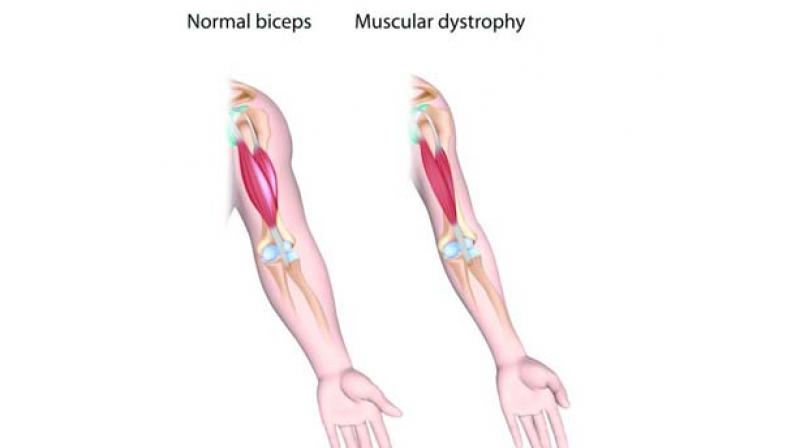Breakthrough to find cure for muscular dystrophy

Hyderabad: Sleeping muscle stem cells repair and regenerate injured muscles, but these do not work in people who suffer from muscular dystrophy.
Scientists of the Centre for Cellular and Molecular Biology (CCMB) have discovered a pathway which sets the stage for further research to understand whether it can be developed to form drugs for those who suffer from the disease.
The research was published in Science Signalling on July 24. CCMB scientists say this will require further research on dystrophic mice to understand whether the infusion of chemicals in the pathway can work towards a cure.
Sleeping muscle stem cells awake when there is an injury, wear and tear or traumatic muscle damage in the skeletal muscles of the body. These cells are present in the muscle but are not active all the time. They are activated when there is damage to the muscle.
Dr Jyotsna Dhawan, chief scientist at CCMB, along with her colleague Ajoy Aloysius identified a pathway in normal mice where the stem cells were awakened during injury and worked towards regeneration of the muscle.
Dr Dhawan said, “Awakening of the sleeping cells shows that the body mechanism is in place to repair the damage. In those who are dystrophic, either the stem cells get exhausted due to the constant work load or they require outside intervention wherein they can work towards repair. This process is yet to be understood and needs further research on dystrophic mice.”
CCMB director Dr Rakesh Kumar Mishra said the ‘cross talk’ between two signalling pathways works like a switch for the stem cells.
Dr Mishra explained, “This is an important phenomenon in biology as the switch brings in a new hope that there can be drug therapy possible in cases of disease of the muscle.”
The signalling mechanism is by two proteins called ‘Lef1’ and ‘Smad3’ which carry out the work of switching the genes on and off.
Mr Aloysius explained the alternative mechanisms which are in place, and stated that sleeping stem cells make new molecular partnerships during the process.
“The finding will help to devise new therapeutic strategies to enhance the stock of stem cells in diseased muscles. Pursuing this line of research can potentially improve muscle regeneration and reduce muscle wasting,” he said.
The research is a part of basic science where the working of cells and their mechanisms were studied. Muscular dystrophy caused by a deficient X chromosome and it is mostly found to affect boys. It is a rare disease and most of those who are affected are not able to walk, become confined to bed and eventually die.

